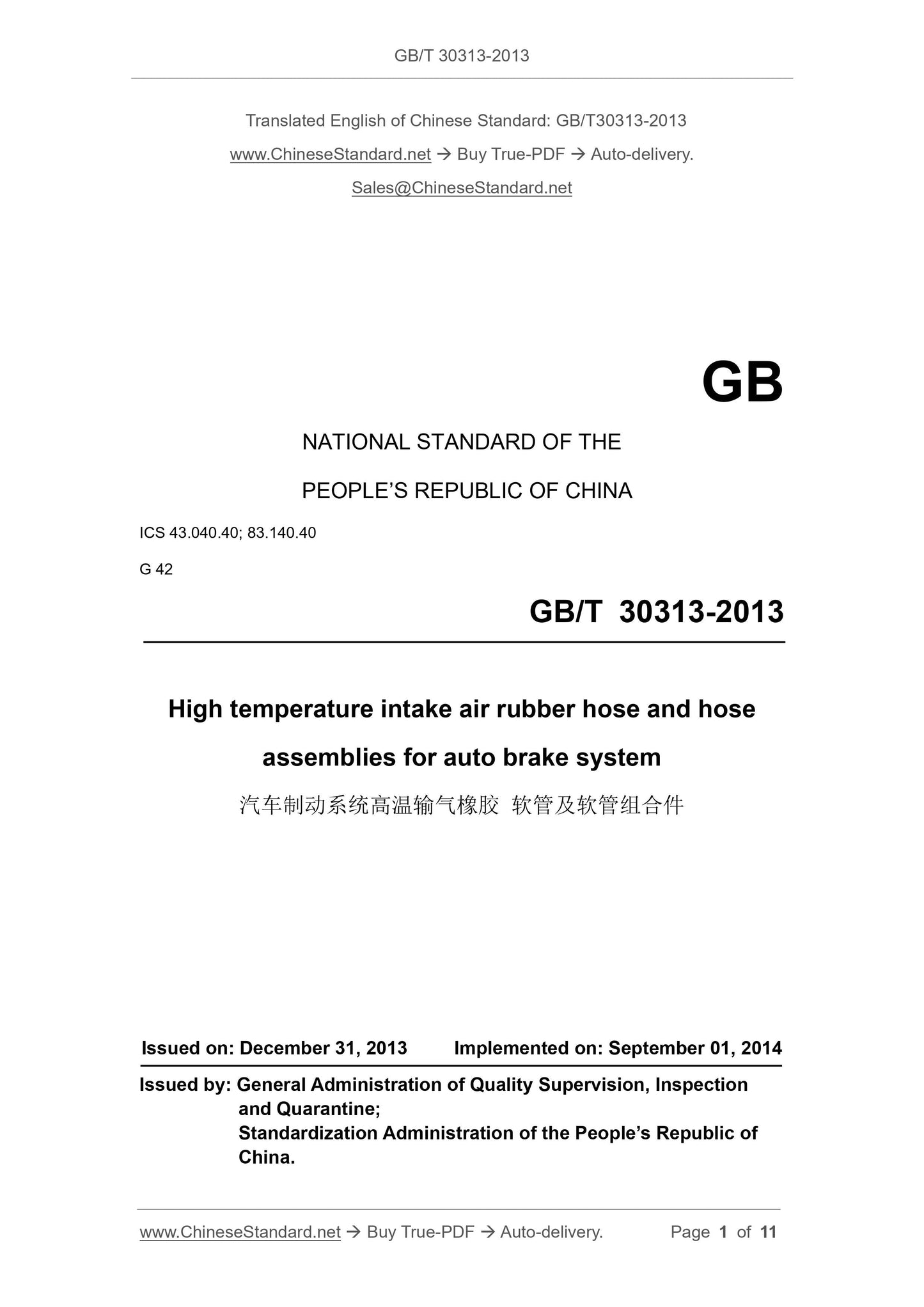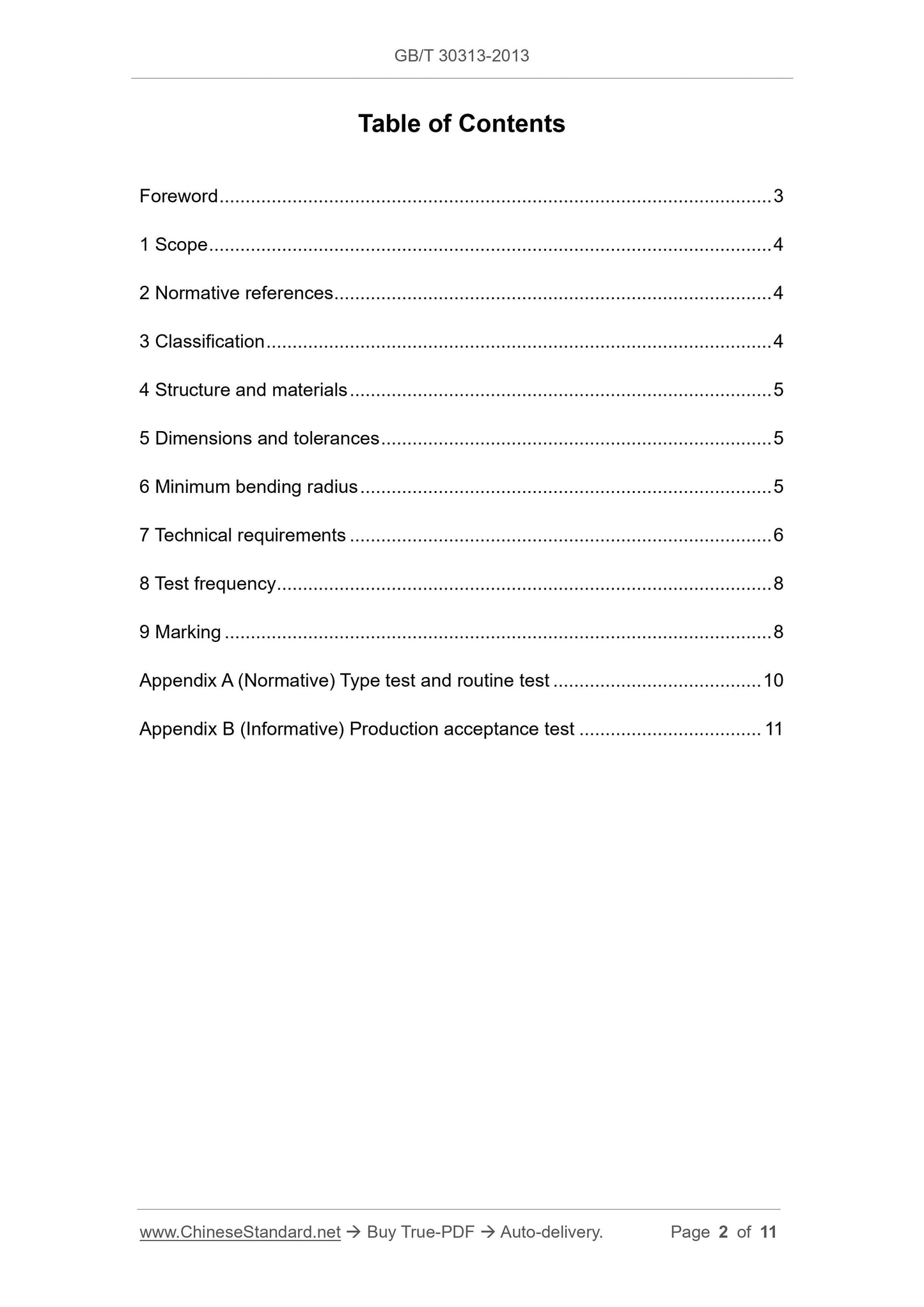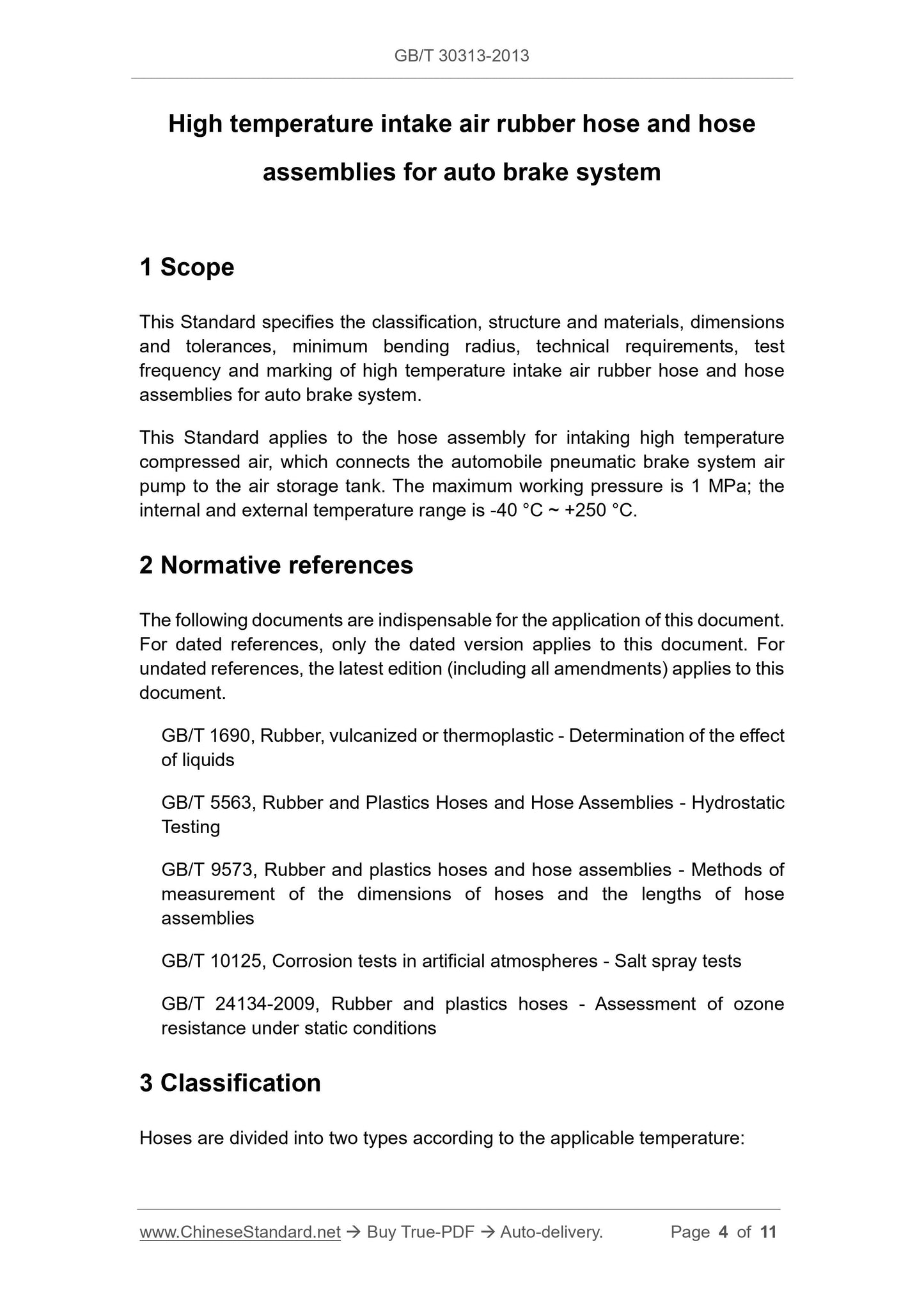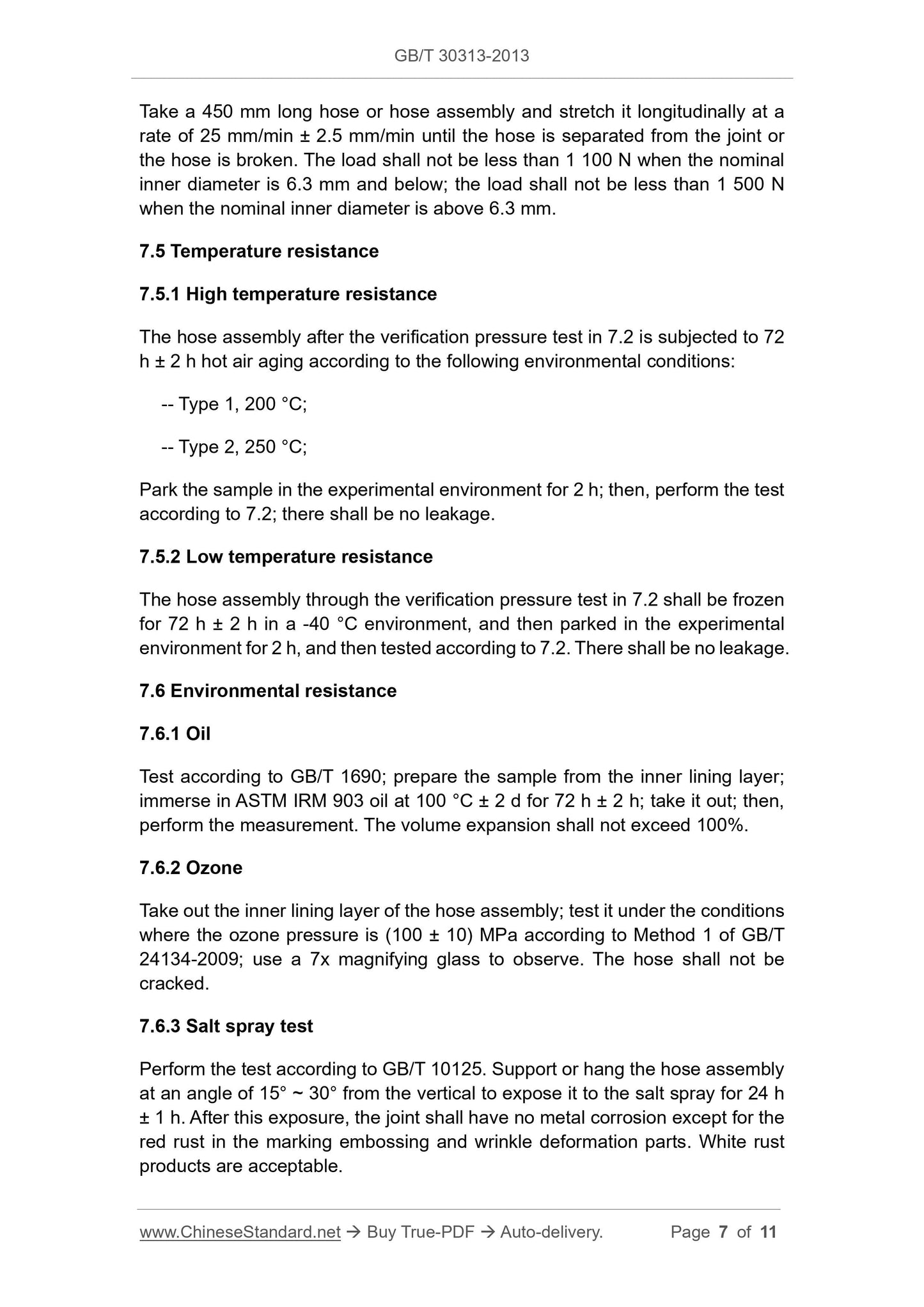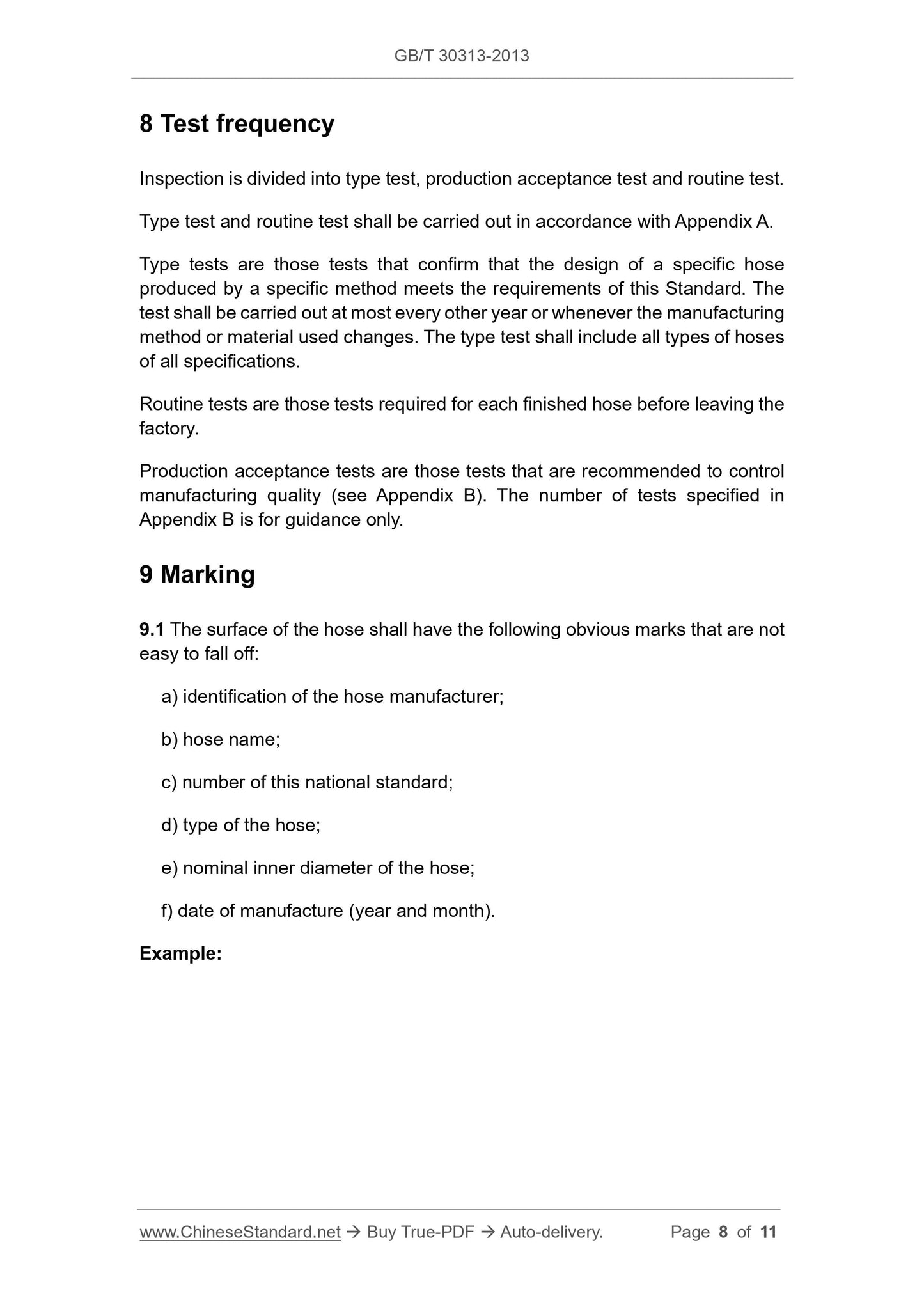1
/
of
5
www.ChineseStandard.us -- Field Test Asia Pte. Ltd.
GB/T 30313-2013 English PDF (GB/T30313-2013)
GB/T 30313-2013 English PDF (GB/T30313-2013)
Regular price
$170.00
Regular price
Sale price
$170.00
Unit price
/
per
Shipping calculated at checkout.
Couldn't load pickup availability
GB/T 30313-2013: High temperature intake air rubber hose and hose assemblies for auto brake system
Delivery: 9 seconds. Download (and Email) true-PDF + Invoice.Get Quotation: Click GB/T 30313-2013 (Self-service in 1-minute)
Newer / historical versions: GB/T 30313-2013
Preview True-PDF
Scope
This Standard specifies the classification, structure and materials, dimensionsand tolerances, minimum bending radius, technical requirements, test
frequency and marking of high temperature intake air rubber hose and hose
assemblies for auto brake system.
This Standard applies to the hose assembly for intaking high temperature
compressed air, which connects the automobile pneumatic brake system air
pump to the air storage tank. The maximum working pressure is 1 MPa; the
internal and external temperature range is -40 °C ~ +250 °C.
Basic Data
| Standard ID | GB/T 30313-2013 (GB/T30313-2013) |
| Description (Translated English) | High temperature intake air rubber hose and hose assemblies for auto brake system |
| Sector / Industry | National Standard (Recommended) |
| Classification of Chinese Standard | G42 |
| Classification of International Standard | 43.040.40; 83.140.40 |
| Word Count Estimation | 9,917 |
| Quoted Standard | GB/T 1690; GB/T 5563; GB/T 9573; GB/T 10125; GB/T 24134-2009 |
| Regulation (derived from) | National Standards Bulletin 2013 No. 27 |
| Issuing agency(ies) | General Administration of Quality Supervision, Inspection and Quarantine of the People's Republic of China, Standardization Administration of the People's Republic of China |
| Summary | This standard specifies the classification of high-temperature gas automotive brake systems Rubber hoses and hose assemblies, structures and materials, dimensions and tolerances, minimum bend radius, technical requirements, test frequency and logo. This s |
Share
